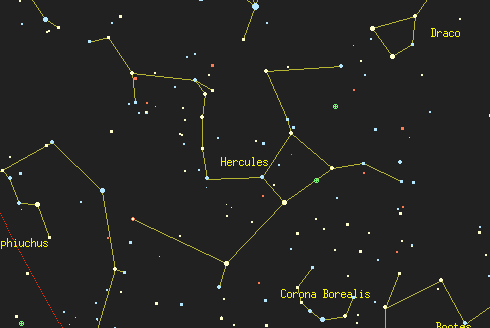
The Columbia Encyclopaedia wrote:Hercules, in astronomy, northern constellation located between Lyra and Corona Borealis. It is traditionally depicted as the hero Hercules in a kneeling position. There are no very bright stars in Hercules and only three of third magnitude, the brightest of which, Ras Algethi (Alpha Herculis), is a red giant and possibly the largest visible star in the sky. The constellation contains the globular star cluster M13, barely visible to the naked eye but spectacular even in a small telescope. Hercules reaches its highest point in the evening sky in late July.
Hercules (Herakles or Irakles in Greek) is the Latin form of the name of the Greek hero.
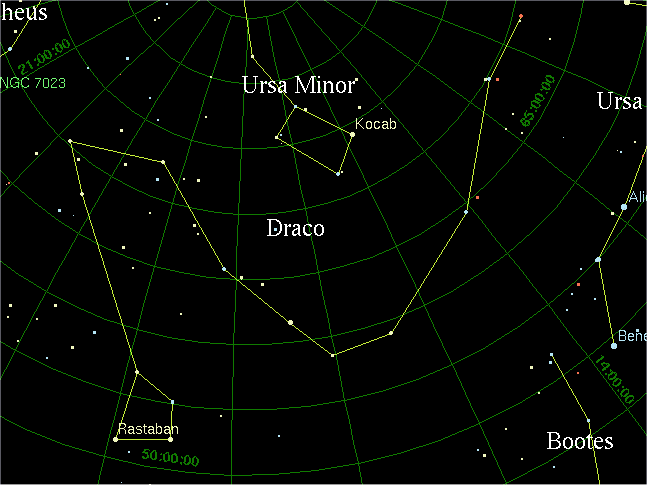
Right beside Hercules in the night sky is Draco . . .
The Columbia Encyclopaedia wrote:Draco, northern constellation lying SE of Ursa Minor and N of Lyra and Hercules. It is traditionally depicted as a dragon. Draco contains the bright star Eltanin (Gamma Draconis). Thuban (Alpha Draconis) was the polestar 5,000 years ago, i.e., it was the star nearest the celestial pole, but because of the precession of the equinoxes, the polestar is now Polaris. Draco reaches its highest point in the evening sky in July, and is visible throughout the year for observers north of 40°N lat.
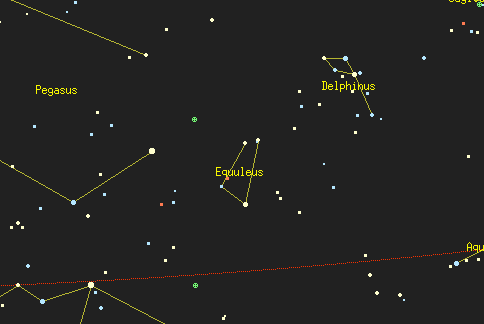
Finally, there is Equuleus, which means "the Foal" . . .
Wikipedia wrote:Equleuus is the second smallest constellation, at 72 square degrees. The only constellation that is smaller is Crux. It is not a particularly conspicuous constellation; its brightest star is α Equ (Kitalpha), at magnitude 3.92m.
There are few variable stars in Equuleus. Only around 25 are known, most of which are obscure. γ Equ is an alpha CVn star, ranging between magnitudes 4.58m and 4.77m over a period of around 12½ minutes. R Equ is a Mira variable that ranges between magnitudes 8.0m and 15.7m over nearly 261 days.
*********************************
One of the problems which you run into is that almost all of the constellations were named before the Romans came into the picutre--so most of them have Greek names, or Latin versions of names from Greek mythology. However, it is important to consider that the "constellations" (from Latin, meaning "stars together") do not exist
per se--we just choose to associate certain stars in "seeing" the constellations. Of course, no one "owns" the constellations, so many cultures have seen the same or different groupings of stars, constellations, and given them different names.
Two of the most easily identified constellations in the night sky are what are known in America as the Big Dipper and Little Dipper. But to the Romans, the were the Big and Little Bear--
Ursa Major and
Ursa Minor, and those names are traditionally used in astronomy to this day.
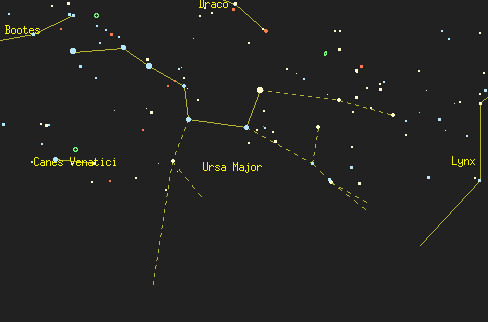
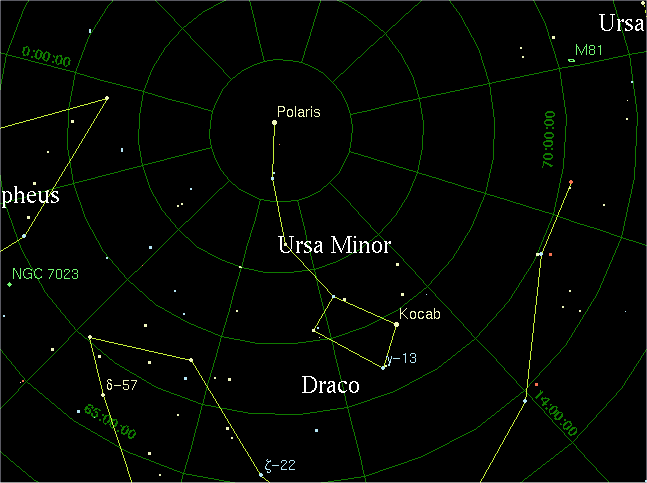
The brightest star of
Ursa Minor is
Polaris, which is known as the North Star, or the Pole Star, being almost directly overhead when viewed in the northern hemisphere, and it has therefore been important in navigation by land or by sea for literally thousands of years.